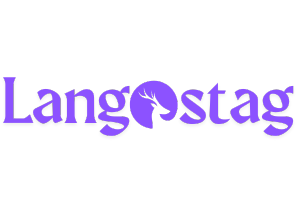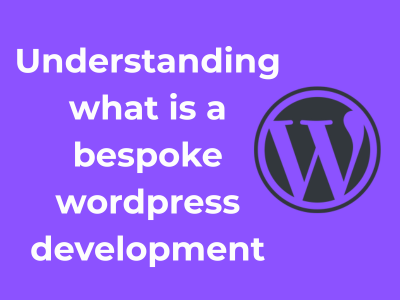Hello there! Let’s talk about something super important and fascinating—why multilingual NLP (Natural Language Processing) is making waves in today’s global world. In an era where people from different cultures and languages interact more than ever, offering AI systems the ability to understand and communicate in multiple languages is no longer optional—it’s essential. Here’s why this matters so much:
The World Speaks in Many Voices – and So Should AI
Imagine the complexity of building systems that can seamlessly switch between Mandarin, Spanish, Arabic, and Swahili—not to mention regional dialects! Right now, folks worldwide rely on AI tools to translate texts, recommend content, find solutions in customer support, and so much more. The kicker? Over 7,000 languages are alive and kicking globally, and only a small fraction of them are currently supported by most AI systems. We can do better.
Without robust multilingual systems, conversations become one-sided. How can a global business serve its audience when its AI-backed tech only speaks English? It creates divides instead of helping bridge gaps. That’s why empowering AI to understand and process multiple languages isn’t just a cool bonus—it’s foundational for inclusivity, fairness, and, let’s be honest, business longevity in the interconnected marketplace.

The Multilingual World = Unparalleled Opportunities
Besides making interactions more accessible, multilingual NLP creates endless opportunities. Businesses can quickly expand into international markets without waiting on multilingual human teams. Governments can provide better citizen services in multiple official languages. Collaboration across borders becomes smoother when reports, research, and ideas can be effectively translated and understood by diverse teams. It’s like giving the world a universal toolkit when it comes to communication.
- Imagine e-commerce platforms suggesting products in a customer’s spoken language, based not just on preferences but also cultural idioms.
- Or medical AI systems offering diagnostics and advice—even in lesser-known, underserved languages.
- How about AI-driven document translators understanding regional nuances that go beyond literal words? Who wouldn’t want that kind of magic?
Thinking Beyond Translation
Now, here’s the critical bit that many overlook: multilingual NLP isn’t just about translation. It’s about understanding. Think context. A good NLP system must grasp sarcasm, idioms, and cultural connotations specific to each language. What’s hilarious in one language could fall flat in another—or, worse, offend someone! In short, multilingual models need to act like empathetic linguists: they must not only “know” the language but also recognize its subtleties with grace and nuance.
Empowering Vulnerable Communities
Another reason multilingual NLP matters deeply is its ability to uplift communities in need. Not everyone speaks a globally dominant language like English or Chinese. By developing tools that cater to indigenous or geographically local languages, AI can deliver enormous value—be it providing educational content, healthcare information, or disaster alerts. This promotes equality in access to information, giving everyone, regardless of their native tongue, a voice and a chance to thrive.
Key Building Blocks: Combining NLP with LangStag Insights
When it comes to developing cutting-edge multilingual AI systems, having a solid foundation is absolutely key. Combining the power of Natural Language Processing (NLP) with the insights provided by LangStag (short for Language Staggering), you can create systems that don’t just translate, but truly understand and communicate across different languages and cultures. Let’s dive into the essential building blocks that will give your AI systems a solid multilingual edge.
Understanding the Role of NLP
At its heart, Natural Language Processing (NLP) is about teaching machines to “read,” “understand,” and even “write” in human language. This isn’t limited to English — NLP spans the myriad of languages we use globally. From identifying syntax and semantics to recognizing idioms, slang, and cultural nuances, modern NLP tools are the foundation for any multilingual AI system.
The challenge? Languages are diverse. What works grammatically for English might differ drastically from how sentences are structured in Mandarin or Hindi. This is where LangStag rides to the rescue.
Introducing LangStag: The Secret Sauce
LangStag refers to the framework of understanding and incorporating linguistic and cultural diversity into AI systems. Where common NLP might falter in handling specialized or less widely spoken languages, LangStag steps up by offering a “staggered” or tiered approach to language complexity.
Think of it as adding an extra layer of cultural and linguistic fluency on top of your basic NLP structure. By systematically integrating regional expressions, dialects, and context-heavy phrases, LangStag ensures your AI systems don’t just sound robotic but resonate with real meaning.
Building Blocks to Combine NLP and LangStag
Here are the core ingredients for success:
- Robust Language Models: Start by using pre-trained language models such as BERT, GPT, or LangStag-enhanced versions specifically tuned for multilingualism. These models offer a solid starting point for multilingual text processing.
- Data Diversity: Feeding your NLP system with varied and multilingual datasets ensures that it learns to handle different sentence structures, vocabulary, and cultural nuances across languages.
- Linguistic Insights from LangStag: Here, insights about language families, cultural norms (such as formal vs. informal address), and even non-verbal cues come into play.
- Named Entity Recognition (NER): Make sure your system can spot names, locations, and unique identifiers accurately across cultures. For instance, some countries place surnames before given names, and LangStag expertise helps ensure your system knows the difference.
- Contextual Understanding: True multilingual communication relies on context. This means your stack should be able to analyze the meaning behind words within their specific grammatical and situational context, whether it’s a legal document or a casual text message.
Why this Combination Works
Imagine building a multilingual chatbot that can answer customer queries in Spanish, Japanese, or Swahili without skipping a beat. NLP helps your system process the grammar and vocabulary, while LangStag polishes those responses to account for idioms, cultural norms, and even the tone expected by native speakers.
The result? An AI system that feels authentic and inclusive, not awkward or mismatched. That’s the magic of combining NLP and LangStag insights.

Identifying Challenges Unique to Multilingual Text Processing
If you’ve ever tried to navigate a foreign language, whether during travel or online, you know the complexities that different languages bring. Now imagine teaching an AI to understand all of these nuances! Multilingual text processing is like conducting an orchestra where every instrument (language) has its own rhythm, pitch, and style. Let’s dive into the unique challenges that make this an intriguing and demanding task for developers and data scientists alike.
1. Diversity of Language Structures
At its core, one of the trickiest aspects of multilingual processing is the simple fact that languages structure sentences, ideas, and expressions differently. Consider word order: English is subject-verb-object (e.g., “I love cats”), but if you’re looking at Japanese, you’d see subject-object-verb (e.g., “I cats love”). AI systems need to adapt to these fundamental linguistic differences when parsing or generating sentences.
And that’s just the beginning! Some languages – like Mandarin – don’t conjugate verbs, while others (hello, Hungarian!) enjoy packing multiple meanings into lengthy, morphologically complex words. Teaching a single AI model to handle all this? That’s as tough as trying to master ten different sports at once.
2. Ambiguity and Context in Multiple Languages
Languages are full of ambiguous words, and their meaning often depends on context. For example, the English word “bank” could refer to a place that handles money or the side of a river. In multilingual systems, resolving this ambiguity becomes doubly difficult, because how a language handles context isn’t universal.
Some languages rely heavily on explicit grammatical markers, while others lean on sentence structure or even cultural cues. AI has to pick up on all of this without making wild guesses. So, when someone says, “Can you take me to the river bank?” your system better not suggest ATM locations in the area!
3. Handling Low-Resource Languages
One of the biggest hurdles comes up when dealing with low-resource languages. These are languages that lack substantial written or digital resources, such as texts used to train AI models. Think: fewer books, fewer websites, and far fewer labeled datasets. All these deficits pose serious challenges for AI models that thrive on vast amounts of data.
For instance, while it’s relatively easy to find millions of text samples for English or Spanish, something like Quechua or Basque might only have a handful of reliable digital records. This imbalance means multilingual systems almost always perform better on widely spoken languages, leaving speakers of smaller languages underserved.
4. Code-Switching and Mixed Language Input
And then there’s code-switching – when speakers mix two or more languages in the same sentence. It’s far more common than people realize, especially in bilingual communities. An example might be: “¿Puedes pick me up a coffee en el camino?” (Translation: “Can you pick me up a coffee on the way?”). For monolingual systems, this type of input is chaos incarnate!
Multilingual AI systems need to recognize when languages are switched mid-sentence and adjust on the fly. That’s a tall order, especially when switching involves languages with very different syntax or vocabulary overlap (Spanish-English is challenging, but imagine German-Japanese!).
5. Script Variations and Non-Latin Alphabets
Finally, let’s not forget the challenge of script diversity. Unlike humans, AI can’t “just guess” that two scripts refer to connected languages (e.g., Hindi in Devanagari script versus Urdu in Arabic script). Throw in logographic systems, like Chinese characters, and your multilingual processing machine suddenly has a steep learning curve to climb.
Specialized Techniques for Context-Rich Language Understanding
Let’s dive into something fascinating — creating AI systems that can not only understand multiple languages, but also grasp the meaning and nuance behind the words. Understanding language is tough enough for humans, let alone machines! But with the right specialized techniques, we can teach AI to “read between the lines” of multilingual text and become effective in context-rich communication.
Emphasizing the Importance of Context
Language isn’t just about words — it’s about the meaning that those words convey in specific situations. Imagine the phrase “It’s cold in here.” Depending on the context, it could mean someone is physically cold, they’re requesting to turn up the heat, or even that the atmosphere in a room feels emotionally distant. Context is everything!
Multilingual AI systems face an extra challenge here because different languages express context in different ways, sometimes with grammatical structures, cultural nuances, or idiomatic expressions. To build a system that’s effective, we must focus on teaching it to understand context across linguistic boundaries.
Key Techniques for Context-Rich Understanding
So, how do we equip AI with the tools to tackle this challenge? Here are some specialized techniques commonly used:
- Contextual Embeddings: Language models like BERT and GPT employ contextual embeddings, which capture the meaning of a word based on its surroundings. For example, the word “bank” will mean a financial institution in one sentence and a riverbank in another depending on its neighbors in the sentence. For multilingual AI, these embedding strategies need fine-tuning to work equally well in each supported language.
- Cross-Lingual Transfer Learning: This involves training a model on a resource-rich language (like English) and applying that knowledge to a resource-scarce language. It requires teaching the AI how context interacts across similar languages and even unrelated ones.
- Multimodal Training: Sometimes text alone isn’t enough to understand the context. By pairing text with images, audio, or video, AI can associate linguistic context with visual or auditory cues. For instance, emotions conveyed in a photo or tone of voice can enhance understanding of ambiguous text.
Applying Domain-Specific Fine-Tuning
When it comes to building effective context-aware solutions, one size does not fit all. Contexts can vary widely depending on the applications — consider medicine, legal contracts, or casual conversation. Fine-tuning the AI for specific domains ensures the system understands unique terminology, cultural references, and patterns of communication.
For example:
- Medical Context: The word “cold” could refer to an illness rather than a temperature. Fine-tuning a model with medical text helps AI infer the most likely meaning.
- Legal Context: A phrase like “on or before” carries precise implications in legalese. Domain-specific AI must understand how such phrases dictate actions or timeframes.
Don’t Underestimate Evaluation
A key part of mastering context-rich understanding is constant evaluation. Sure, your AI may look great in testing, but have you fed it data with slang, typos, or idiomatic phrases? Simulating real-world usage helps ensure it handles natural communication effectively. Context understanding improves over time as we address such gaps.
Training Custom AI Models with Diverse Language Data
Training custom AI models with diverse language data is an exciting and intricate process – kind of like assembling a multilingual orchestra that harmonizes seamlessly. If it sounds complex, don’t worry! We’ll break it down into approachable and digestible steps. By the end of this piece, you’ll have a strong understanding of why diverse data is the lifeblood of multilingual AI systems and how to harness its full potential.
The Importance of Diverse Language Data
Imagine teaching a child to communicate but only exposing them to one dialect. Sure, they’d be fluent in that specific dialect, but they might struggle elsewhere. AI models are similar! If we only train them on limited data or in a single language, they can’t adapt and perform well across different linguistic contexts.
But here’s the magic: when we feed AI models with rich, diverse language datasets, they become far more powerful. They can recognize nuances, handle idiomatic expressions, and even understand cultural subtleties in multiple languages. That’s the key to unlocking a truly global AI system.
Where to Start With Dataset Collection
First things first – you need the data. However, we’re not talking about just any data; you need high-quality and diverse language datasets suitable for the task your AI model is tackling. Here’s where you can start:
- Access open-source datasets: Platforms like Common Crawl, OSCAR, and multilingual corpora from groups such as UNESCO can be treasure troves of diverse language data.
- Leverage user-generated content: Consider gathering data from social media, reviews, or forums, but don’t forget to handle data privacy and permissions with care.
- Collaborate with local experts: Linguists, translators, and cultural practitioners can curate domain-specific or underrepresented language data sets to enrich your system.
A critical point here is balance. Your dataset should aim to represent both major and minor languages, ensuring inclusivity. Often, low-resource languages are underrepresented in multilingual models, making it imperative you pay extra attention to sourcing high-quality data for these often-overlooked tongues.
Preparing and Preprocessing the Data: Why It’s a Big Deal
Once you’ve gathered data, the next step is preparing it. Raw language datasets often contain noise – think spam, incorrect translations, or unstructured snippets. A cleanup is essential!
- Start by removing duplicate or irrelevant data.
- Standardize formats for text-processing tasks (e.g., lowercasing uniformly).
- Tokenize and align text for multilingual datasets, especially when training translation or cross-lingual systems.
- Address biases by examining over-represented or potentially problematic patterns. Properly curated data leads to more ethical and effective AI models.
Fine-Tuning for Specific Applications
Generic models like GPT or BERT are great, but you can elevate their power by fine-tuning them for your application. For instance:
- Sentiment Analysis: Train your AI with domain-specific emotion-rich datasets to identify cultural variations in tones and expressions.
- Machine Translation: Focus on parallel text in the language pairs you want your AI to excel in, especially for unique or lesser-studied languages.
- Customer Support: Use real-world customer interactions to create conversational AI that seamlessly switches between languages.
Key Technical Tips for Training Your Model
Finally, let’s talk tech tips. Training multilingual AI requires finesse:
- Leverage multilingual pre-trained models: Models like mBERT or XLM-R save time and are excellent at cross-lingual tasks.
- Use transfer learning: Start with a pre-trained model and fine-tune it with your domain-specific data, saving computation power and resources.
- Balance tasks for accuracy: Multilingual training involves balancing priorities – don’t let one dominant language overshadow low-resource ones.
At its core, diverse language data is your AI’s map to navigating the global linguistic terrain – from French idioms to Swahili proverbs. Embrace this process with curiosity and care, and you’ll create an AI system that truly understands the world, one word at a time!
Evaluating and Enhancing System Accuracy Across Languages
So, your multilingual AI system is up and running—congrats! But hold on, the journey doesn’t end there. To truly make your AI shine across different languages and dialects, it’s crucial to evaluate its performance and continuously fine-tune it. Let’s talk about how to do this effectively, one step at a time.
Why Evaluating Across Languages is Non-Negotiable
Here’s the thing: languages are beautifully complex, and no two are the same. A model that works wonders in English could stumble comically in Japanese or falter when handling the nuances of Arabic. Why? Because context, syntax, idioms, and even cultural cues vary greatly. By evaluating your AI across languages, you can uncover blind spots and areas in need of improvement before those issues impact real-world users.
A Practical Path to Evaluation
Measuring accuracy is no small task, but don’t worry—you’ve got tools and tactics to guide you. Here’s a breakdown of key strategies:
- Benchmarking: Start with what’s already available. Use standard evaluation datasets like FLORES or XNLI, which are designed for comparing multilingual models. These benchmarks can provide your initial performance metrics.
- Test with Diverse Datasets: Create your own test sets with rich textual diversity—different dialects, domain-specific terminology, and informal language. This will show how your system performs outside controlled environments.
- User Feedback: Let actual native speakers try the system. Their firsthand experience is gold! They’ll catch misinterpretations or awkward translations your AI might not notice.
Boosting Accuracy—The Fun Part!
You’ve identified gaps—awesome! Now, it’s time to boost your AI’s multilingual brilliance. Here are a few battle-tested methods:
- Fine-tune Models: If there are consistent errors in certain languages, consider additional fine-tuning on specific language data. For instance, a model struggling with Korean honorifics could benefit from tailored datasets that highlight these nuances.
- Transfer Learning: Transfer knowledge from a well-performing language in your model to enhance underperforming ones. For example, a Spanish-Portuguese relationship can work wonders, given their similarities.
- Improve Tokenization: Splitting text into meaningful tokens is key for accurate processing. Use language-specific tokenization tools to ensure your AI interprets text correctly, especially for languages that don’t use spaces (like Chinese).
- Incorporate Cultural Context: Sometimes, accuracy isn’t just about translation—it’s about understanding intent and cultural nuance. Add context-specific training samples to bridge these gaps.
The Long-Term Payoff
Remember, evaluating and refining your system isn’t just about today’s performance—it’s an investment in the future. The more accurate and adaptable your AI is, the better it will handle evolving languages and user expectations. Plus, there’s nothing like the confidence of having a robust system that resonates with users globally.
Scaling Multilingual Solutions for Real-World Applications
Okay, so you’ve built this amazing multilingual AI system – now what? Time to scale! Let’s talk about bringing your language-savvy solution to the real world, where it can thrive and do some genuine good. Scaling multilingual AI isn’t just about adding new languages; it’s about adapting your system to different markets, contexts, and user needs, all while keeping efficiency and accuracy top-notch. Ready? Let’s dive in!
1. Think Big, Act Local: Customizing for Specific Markets
Scaling isn’t a one-size-fits-all game. Every region, user base, or market has its own quirks, expectations, and cultural nuances. As you expand, make sure to localize your AI models. This isn’t just translation – it’s about tailoring the way your system understands and responds to fit the unique cultural context.
- Adapt interfaces to fit local customs and preferences.
- Incorporate language-specific idioms or colloquial phrases. (Yep, they matter!)
- Ensure your system respects local societal norms and sensitivities.
Your AI might be multilingual, but relevance always wins. So, know your audience and build with them in mind.
2. Balancing Breadth and Depth: Adding New Languages Strategically
It’s tempting to add as many languages as possible – but not so fast! Quality over quantity is your mantra here. Expanding a multilingual system successfully starts with selecting the right languages for your goals. Research which languages align with your user demographics or business priorities.
- Start with high-impact languages that cover the largest percentage of your market.
- Gradually branch into niche languages to meet smaller, underserved audiences.
- Don’t forget about resource-rich languages; you’ll need solid datasets to maintain accuracy as you add more!
3. Distributed Systems: Keeping It Fast and Scalable
Got global users? Then responsiveness matters. Latency can sour the user experience real quick. To ensure your AI is zippy across borders, you’ll likely need a distributed system architecture. Think global data centers, load balancing, and cloud computing – these are the behind-the-scenes heroes that keep your application running, no matter where it’s being used.
- Pro-tip: Work with regional partners or develop local infrastructure to further optimize speed.
- Leverage Content Delivery Networks (CDNs) to cache multilingual assets like language models.
4. Monitoring and Maintenance Across Languages
No matter how smart your system is, AI ain’t magic. Multilingual setups need regular maintenance. Your job doesn’t stop at launch; it transforms into continual optimization.
Here are some ways you can ensure ongoing brilliance:
- Metrics for success: Track language-specific performance, like accuracy or user satisfaction, to pinpoint weaknesses.
- Human-in-the-loop: Keep human reviewers on board for linguistic and cultural checks – automation can take trips and falls you won’t anticipate!
- Regular updates: Languages evolve, and so should your system! Incorporate feedback and expand your training data when trends shift.
5. Keep Ethics Front and Center
This one’s a biggie. When deploying multilingual AI, always evaluate its societal impact. Biases can creep in across languages or dialects, affecting how users engage with your system. To scale responsibly:
- Audit the AI’s decisions for fairness across languages.
- Pledge transparency. Let users know how the system works and its limitations.
- Remain compliant with global and local regulations like GDPR, especially around sensitive linguistic data!
Scaling isn’t just about numbers – it’s about ethics, inclusivity, and trust.
6. Dream Big: Real-World Examples to Inspire You!
Want to see scalable multilingual solutions in action? Think of global giants like Google Translate or Duolingo. These systems didn’t start perfect – they iterated, refined, and eventually dominated their niches. Your project can do the same.
Remember, the key is staying user-focused, adaptable, and forward-thinking. Scaling multilingual AI systems is a journey, but with careful planning and heart, that journey leads to incredible real-world impact. Get ready to make waves!











